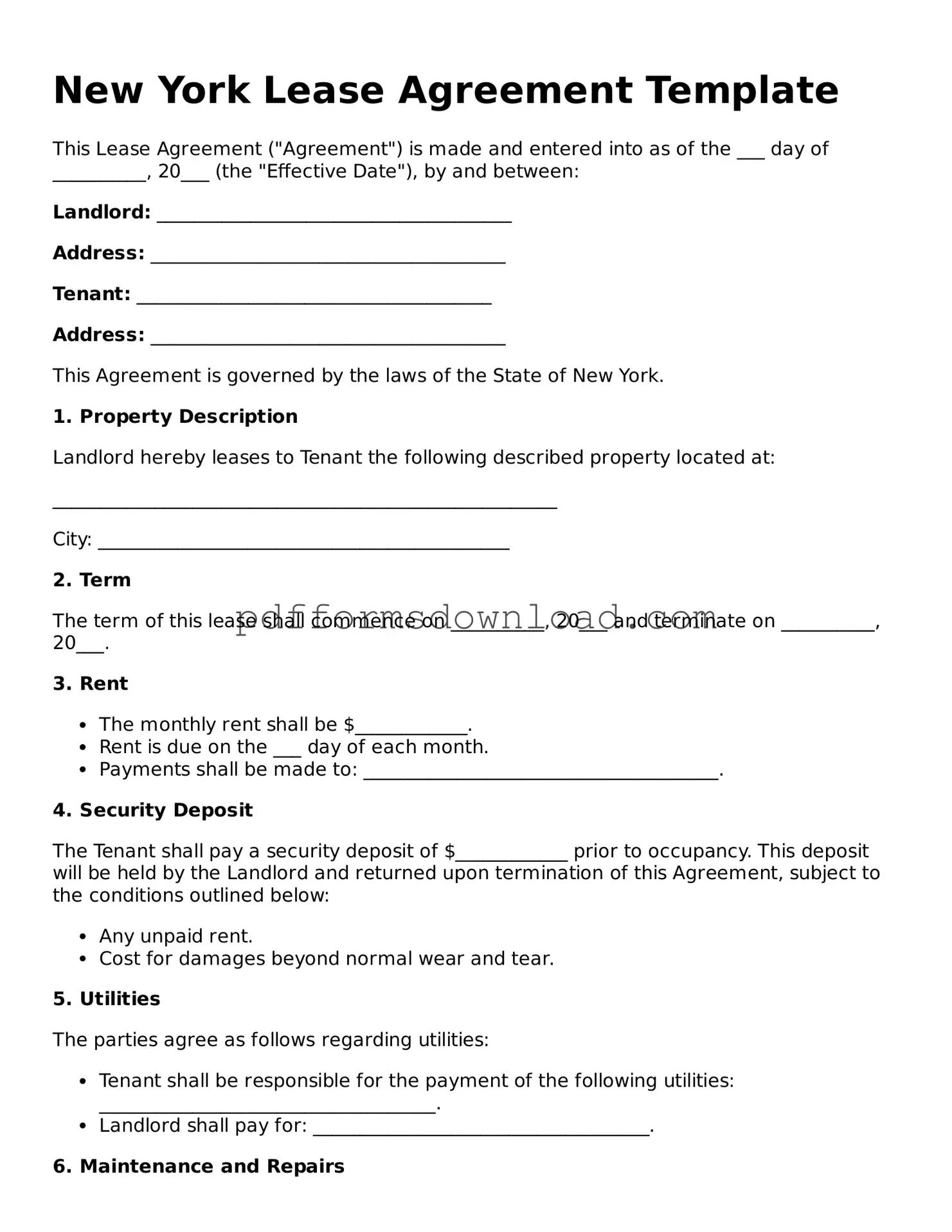What is a New York Lease Agreement?
A New York Lease Agreement is a legal document that outlines the terms and conditions between a landlord and a tenant for renting a residential property in New York. It details the rights and responsibilities of both parties, including rent amount, duration of the lease, and maintenance obligations.
What should be included in a New York Lease Agreement?
The agreement should include essential details such as the names of the landlord and tenant, property address, lease term (start and end dates), rent amount, payment due dates, security deposit information, and any rules regarding pets or maintenance. It may also cover termination clauses and procedures for renewing the lease.
How long is a typical lease term in New York?
Lease terms in New York can vary, but they are commonly one year. However, landlords and tenants can agree on shorter or longer terms, such as month-to-month leases or multi-year agreements. It's important to clearly specify the lease duration in the agreement.
Can a landlord increase rent during a lease term?
Generally, landlords cannot increase rent during a lease term unless the lease explicitly allows for it. After the lease expires, the landlord may propose a new rent amount for a renewal. Tenants should review their lease for any clauses related to rent increases.
What is a security deposit, and how is it handled in New York?
A security deposit is money paid by the tenant to the landlord to cover potential damages or unpaid rent. In New York, landlords can charge up to one month's rent as a security deposit. The landlord must return the deposit within 14 days after the tenant moves out, minus any deductions for damages, which must be itemized.
Are there any specific tenant rights in New York?
Yes, tenants in New York have several rights, including the right to a habitable living space, protection against discrimination, and the right to privacy. Landlords must provide proper notice before entering the property and cannot retaliate against tenants for exercising their rights.
What happens if either party wants to terminate the lease early?
If either party wants to terminate the lease early, they should first review the lease terms for any early termination clauses. Typically, tenants may need to provide written notice, and there may be penalties involved. Landlords also have obligations to mitigate damages by attempting to re-rent the property.
